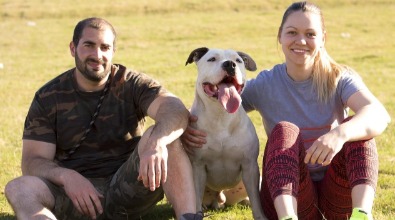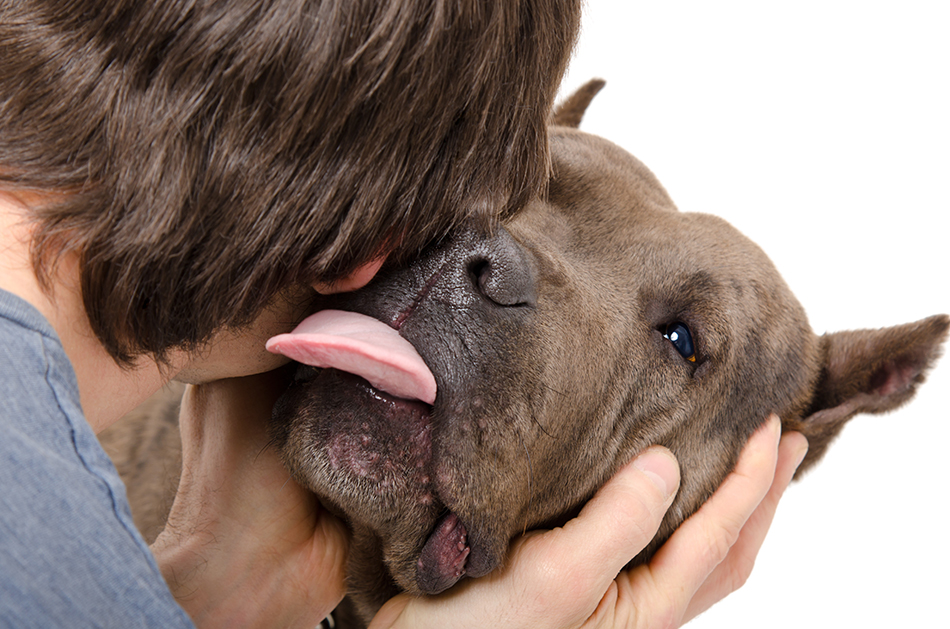In this post:
- Why do breed prejudices and discrimination exist?
- Are problems caused by certain breeds of dog?
- What problems does breed discrimination cause?
- How to end breed prejudices?
All across the country, entire communities have decided to ban or restrict dogs because of their breed. While there is no evidence that breed-specific laws reduce dog bites or attacks on people, certain breeds get more than their fair share of bad press. This has changed the way the general public views them.
These breeds typically comprise the “pit bull” class of dogs, including American Pit Bull Terriers, American Staffordshire Terriers, Staffordshire Bull Terriers, and English Bull Terriers. In this article, we outline what breed prejudice is, why it is wrong, and its issues.Why do breed prejudices and discrimination exist?
Basically, the main reason why prejudice for certain breeds of dogs exists is that there is a lot of misinformation. If you are already afraid of dogs or have a particular bias, you will gravitate towards that information. At this point, there is definitely enough legitimate information to combat that bias with Math and Science. You can reduce that prejudice if you can have a sober conversation with someone.
Most of the time, prejudices are born because a dog made headlines after injuring a person. The media does not represent these types of stories in the correct light. Reporters will embellish events in order to gain more attention and sell more newspapers. Unfortunately, most of the time, the press does not provide all of the facts about the dog in question, or the circumstances surrounding the attack.
Another issue is that the general public latches on to incorrect information that is based on opinion rather than facts. Many scientific and government agencies have shown that you cannot prove that one breed is more likely to bite than another breed.
Are problems caused by certain breeds of dog?
While there have been many documented cases of Pit Bull-type dog attacks, this does not definitively categorize these dogs as aggressive or dangerous. According to the American Veterinary Medical Association, “dog bite statistics are not really statistics, and they do not give an accurate picture of dogs that bite.” Therefore, it is inappropriate to try to find associative patterns based on incomplete data.
In 2008, a team of University of Pennsylvania researchers completed a study of aggressiveness of 30 breeds of dogs. Over the course of 1 year, the researchers collected studies from about 15,000 participants. These questionnaires asked dog owners how their pets reacted in various situations involving other dogs, humans they were familiar with, and strangers. The questions included how does the dog react when a stranger arrives and how the dog reacts when interacting with another dog.
When it came to pitbull breeds, the results were mixed. On the one hand, these breeds were the most aggressive towards other dogs, especially ones they did not know. But on the other hand, pit bull breeds were NOT significantly more aggressive than other breeds when it came to their interactions with their owners and strangers.
Interestingly, the results showed that Chihuahuas and Dachshunds were the most aggressive breeds toward both humans and other dogs. However, both of these breeds are smaller dogs who are not physically capable of inflicting life-threatening injuries. This means that even though they attack people more frequently, it doesn’t receive the same press coverage. Their aggressive behavior is usually categorized as “cute” or “feisty” and dismissed.


What problems does breed discrimination cause?
Aside from the spread of misinformation, breed discrimination can have real consequences in our society. Breeds that are discriminated against are much more likely to be surrendered to animal shelters. People who bring their dog to a humane society aren’t surrendering them because they can’t afford food for their dog, or they can’t afford vet service. It is usually because they have to move and they can’t bring their pet with them.
So now their dog is at a shelter. It doesn’t understand why, and it’s scared. It takes up a kennel in a place where the room is already scarce.
In many, if not most cases, these dogs are perfectly wonderful dogs, who just happened to look a certain way.
Breed Specific Legislation (BSL) makes it hard for pitbull-type dogs to find homes, yet they are still the number one bred dog in America! This means we are actively breeding more of these dogs, while at the same time, we know it will be difficult to find homes for them. Enforcement of breeders is extremely lax, and any person off the street can breed a dog in their backyard. There are too many dogs and not enough people to adopt them. Taking dogs in and keeping them costs shelters a lot of money. They are literally throwing money at an incredible dog who cannot be adopted because of a legislature that does nothing to keep our communities safe in the first place.
We need to ask our lawmakers to put stricter enforcement on breeder licensing and regulation for this harmful practice to finally come to an end.
How to end breed prejudices?
“The best way to make sure that prejudice doesn’t continue or it is at least dramatically decreases, is to get the proper information that is based on science, based on proper behavior, from people who are legitimate sources. Get that information out first and foremost and be an advocate of that information.
Not just “well we like these dogs and they are great because I have one”, but get the information, have the ammunition because it’s really hard to argue with legitimate information.” – Drayton Michaels, CTC
Fortunately, more people and their elected officials are learning why breed bans don’t make sense, and BSL is on the decline. In recent years, 21 states have passed laws prohibiting BSL on the local level. Over 100 municipalities have replaced BSL with breed-neutral policies. Repealing BSL has not resulted in more dog bites in these communities. In fact, after Ohio repealed its statewide breed-based law, State Farm Insurance reported a decrease in dog-related claims.
Final thoughts:
Animal control and legislative approaches to protecting a community from dangerous dogs should not be based on breed. Instead, it should promote responsible pet ownership and develop methods to rapidly identify and respond to owners whose dogs present an actual risk. It is imperative to become more educated in order to combat the hate and the ignorance placed on our beloved pets.
Special thanks to:

Deirdre ‘Little Darling’ Franklin, MSPP
Deirdre “Little Darling” Franklin is the founder, president, and soul behind Pinups for Pitbulls. She holds a master’s degree in public policy from Drexel University, where she specialized in breed-specific legislation. She is also the Volunteer & Foster Manager for the ASPCA Behavioral Rehabilitation Center in Weaverville, NC.

John Griffin
John Griffin is the director of shelter services at Women’s Animal Center in Bensalem, PA. They are committed to the humane and compassionate treatment of animals and are distinguished as America’s First Animal Shelter. John also volunteers his time with Big East Akita Rescue providing behavior evaluations and transports for homeless Akitas found or surrendered in the greater Philadelphia region.

Women’s Animal Center: America’s First Animal Shelter
Founded in 1869 Women’s Animal Center is an open-admission shelter helping pets and their owners in Lower Bucks County and far Northeast Philadelphia. WAC takes in approximately 3,000 animals a year through the animal shelter with a live release rate of over 90%. WAC operates a full-service veterinary hospital whose services include; surgery, routine vaccines, x-rays, ultrasounds, and dental care.





